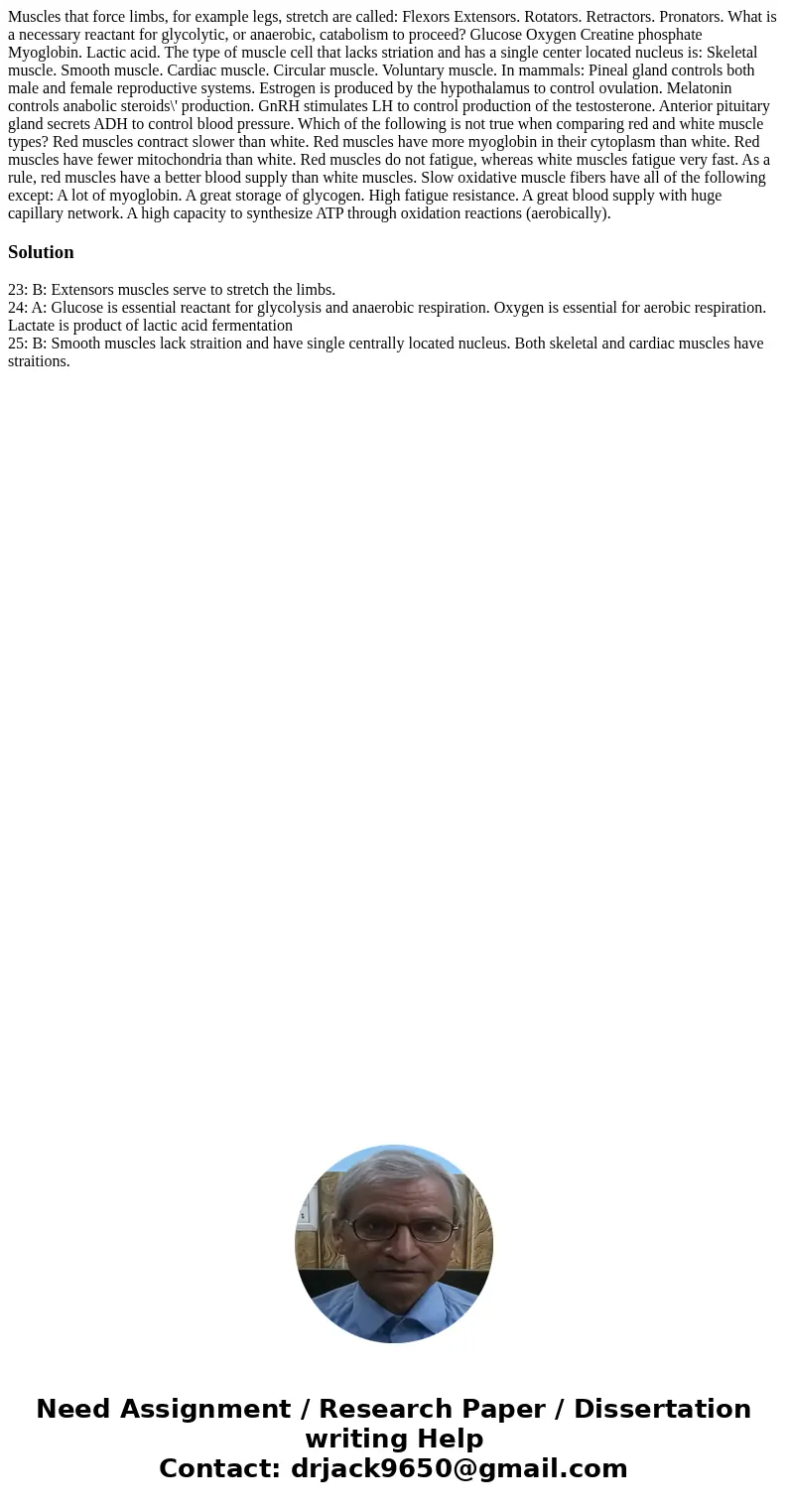Muscles that force limbs for example legs stretch are called
Muscles that force limbs, for example legs, stretch are called: Flexors Extensors. Rotators. Retractors. Pronators. What is a necessary reactant for glycolytic, or anaerobic, catabolism to proceed? Glucose Oxygen Creatine phosphate Myoglobin. Lactic acid. The type of muscle cell that lacks striation and has a single center located nucleus is: Skeletal muscle. Smooth muscle. Cardiac muscle. Circular muscle. Voluntary muscle. In mammals: Pineal gland controls both male and female reproductive systems. Estrogen is produced by the hypothalamus to control ovulation. Melatonin controls anabolic steroids\' production. GnRH stimulates LH to control production of the testosterone. Anterior pituitary gland secrets ADH to control blood pressure. Which of the following is not true when comparing red and white muscle types? Red muscles contract slower than white. Red muscles have more myoglobin in their cytoplasm than white. Red muscles have fewer mitochondria than white. Red muscles do not fatigue, whereas white muscles fatigue very fast. As a rule, red muscles have a better blood supply than white muscles. Slow oxidative muscle fibers have all of the following except: A lot of myoglobin. A great storage of glycogen. High fatigue resistance. A great blood supply with huge capillary network. A high capacity to synthesize ATP through oxidation reactions (aerobically).
Solution
23: B: Extensors muscles serve to stretch the limbs.
24: A: Glucose is essential reactant for glycolysis and anaerobic respiration. Oxygen is essential for aerobic respiration. Lactate is product of lactic acid fermentation
25: B: Smooth muscles lack straition and have single centrally located nucleus. Both skeletal and cardiac muscles have straitions.

 Homework Sourse
Homework Sourse